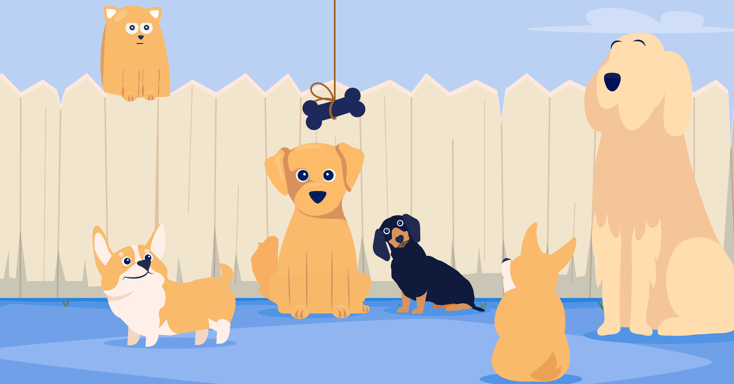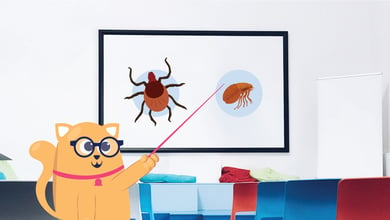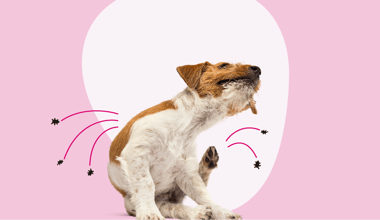Positive Reinforcement Training for Pets

Table of Contents
You might have heard the saying that you can’t teach an old dog new tricks. However, we know this to be untrue!
Properly training your pet (no matter if they’re young or old) is important to building a positive and lasting relationship while keeping him or her stimulated and happy. And while there are many different training techniques to choose from, positive reinforcement is typically the best for most pets.
Let’s take a closer look at animal positive reinforcement training, including what it entails and some tips for getting started with your four-legged friend.
Key Takeaways:
- Positive reinforcement training involves rewarding good behavior instead of punishing bad behavior.
- It is an effective method for shaping or changing your pet's behavior, regardless of their age.
- This training helps build a strong bond with your pet, keeps them mentally and physically stimulated, and reinforces their learning.
What is Positive Reinforcement Training for Pets?
As the name suggests, animal positive reinforcement training is a method by which pet parents reward their furry friends for good behavior. This sounds simple, but you must be very conscious of how you react to your pet’s behavior. With this training, the focus is on praising good behavior, not punishing “bad” behavior.
With consistent rewards (like food treats, praise, or toys) the positive behavior will be repeated, and the undesired behavior occurs less or stops altogether over time. Positive reinforcement training is one of the most effective ways to shape or change your pet’s behavior (typically dogs) no matter if they’re young or old.
Importance of Positive Reinforcement Training
This training technique is important for teaching your pet important commands that can keep them safe, such as stay and sit. But that’s not the only reason it’s used by many professional trainers and pet parents. Positive reinforcement can also help you forge a strong bond with your pet. Through positive training sessions and exercises, you and your pet will begin to understand and communicate with each other better.
Over time, you will learn your dog’s behavioral cues just as they will learn yours in the form of commands. Positive reinforcement training is also a great way to keep your pet mentally and physically stimulated. Pets are just like us, and boredom can lead to undesired behaviors. Consistent training helps keep them happy and reinforces what they are learning.
4 Tips for Positive Reinforcement Training for Your Pet
While this technique sounds easy enough to incorporate into your routine, there are some important guidelines you should follow to ensure that you and your pet are getting the most from this training.
Here are some tips for starting or continuing with positive reinforcement training:
1. Make Sure to Time Commands Correctly
Timing is everything when it comes to this technique. Make sure you are rewarding your pet immediately after they perform a positive behavior. This will communicate to your pet that they are being rewarded for that specific action.
2. Be Consistent
Consistency is key. Always reward your pet for the desired behavior, even if it’s just with a pat on the head, and make sure to use the same commands every time. This helps avoid any confusion.
3. Keep it Short and Sweet
Commands should ideally be one word. Your pet won’t associate a sentence with behavior, so keep commands as simple as possible.
4. Don’t Engage Undesired Behaviors
This can be the most difficult thing for pet parents, but it’s imperative that you don’t unintentionally reward negative behaviors. For instance, if you let your dog outside every time they bark, they will realize this behavior gets them what they want. Instead, reward them when they stop barking.
Conclusion
Want to learn more about positive reinforcement training for your pet? At BetterVet, we understand the importance of keeping your pet healthy and happy through positive training techniques and low-stress veterinary appointments.
Contact us today to learn more about our mobile veterinarian practice and the services we provide, including behavioral consultations for pets in need of specialized training and support.






